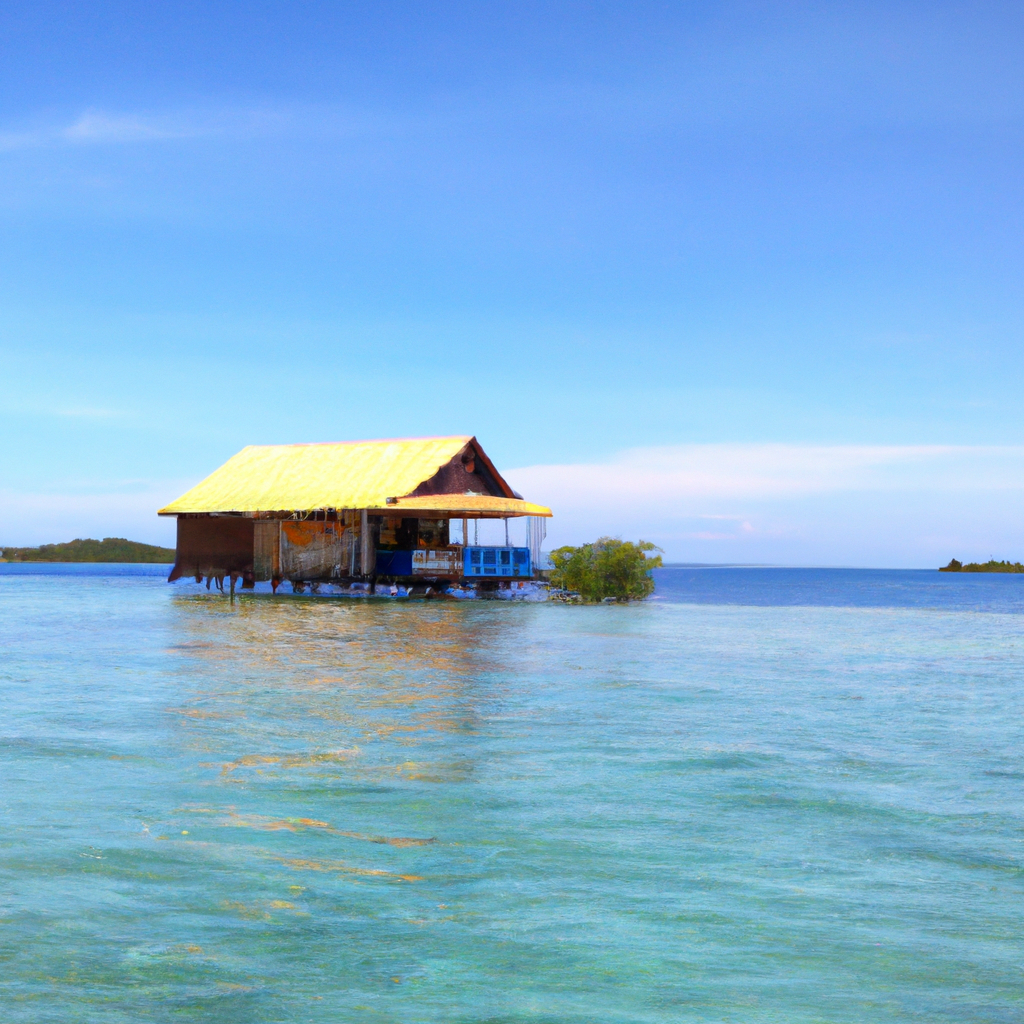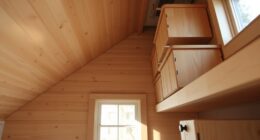Modern Mountain Tiny House With Round Window By Berghaus
As a person who is naturally drawn to the beauty and simplicity of minimalist living, I recently discovered the Dufour model tiny house designed by Berghaus.
This stunning little home is the perfect example of how modern design and sustainable living can come together to create something truly special.
With its clever layout and unique round window, the Dufour model is both stylish and functional, making it the perfect choice for anyone looking to downsize and live closer to nature.
One of the things that really stands out about the Dufour model is the attention to detail that has gone into its construction.
From the high-quality insulation to the infrared floor heating system, this tiny house is designed to be comfortable and efficient in any weather.
And with options for customization and delivery across Europe and Australia, it’s easy to see why so many people are choosing to invest in this sustainable and stylish way of living.
So whether you’re looking for a weekend getaway or a permanent home, the Dufour model tiny house by Berghaus is definitely worth considering.
Key Takeaways
- The Dufour model tiny house by Berghaus is inspired by Polish mountain homes and features a round window for natural light.
- The layout of the tiny house is clever and comfy, maximizing the use of space, and it has special heating and insulation for comfort in any weather.
- The Dufour model is perfect for long-term living or renting out, and is a great investment for those who want to own property but cannot afford a traditional home.
- Berghaus Tiny House offers customization options for their models and delivers their homes across Europe and Australia.
About the Dufour Model
I love the Dufour model tiny house by Berghaus Tiny House because it’s a perfect blend of style and functionality. The tiny house is inspired by Polish mountain homes, and it features a spacious design. The round window allows natural light to enter and brighten up the space, making it look more welcoming and cozy.
In addition to the clever design, the Dufour model is built with high-quality insulation. This ensures that it’s comfortable in any weather. The floors have special heating that uses infrared technology to keep the house warm, making it perfect for long-term living or renting out.
All these features make the Dufour model a great investment for those who want to own property but can’t afford a traditional home.
Benefits of Owning a Tiny House
Living in a tiny home is like carrying a backpack instead of a suitcase, which allows me to focus on experiences rather than possessions. Owning a Dufour model tiny house by Berghaus Tiny House has been a dream come true for me. Not only am I minimizing my carbon footprint and living sustainably, but I’m also generating income by renting it out to vacationers and business travelers.
Here are three benefits of owning a Dufour model tiny house:
- It allows me to live a simpler lifestyle, with less clutter and more focus on experiences rather than material possessions.
- I’m able to save money on utilities and maintenance costs because the house is built with high-quality insulation and special heating technology to keep it warm in any weather.
- Renting out my tiny house has become a great source of income for me, and it’s a great way to share the beauty of tiny living with others.
Dennis and His Story
Listening to Dennis’s story of starting his own tiny home building company despite challenges was truly inspiring. As he shared his journey, I could feel his passion for creating sustainable and affordable housing solutions.
He faced many obstacles along the way, including navigating the permitting process in Germany, but he persevered and built a successful business that offers high-quality tiny homes to customers across Europe and Australia.
Dennis also provided valuable insights into the permitting process in Germany, which can be quite complex for tiny homes. He emphasized the importance of doing thorough research and working closely with local authorities to ensure that all regulations are met. His tips and advice will undoubtedly be helpful to anyone interested in starting a tiny home business or building their own tiny home in Germany.
Overall, Dennis’s story is a testament to the power of perseverance and innovation in the face of challenges.
Frequently Asked Questions
What is the cost range of the Dufour model tiny house?
Wow, the Dufour model tiny house is incredibly affordable! With budget-friendly options starting at just a fraction of the cost of a traditional home, it’s perfect for anyone looking to downsize and live sustainably without breaking the bank.
How long does it typically take to build and deliver a Dufour model tiny house?
Typically, building a Dufour model tiny house takes around 3-4 months from the time of order to delivery. The delivery process is efficient and timely, with Berghaus Tiny House delivering across Europe and Australia.
Can the Dufour model be customized to include additional features or amenities?
Wow, the customization options and design flexibility of the Dufour model tiny house are amazing! With endless possibilities, the team at Berghaus Tiny House can make your dream home a reality. I can’t wait to see what they come up with.
What kind of maintenance is required for the special heating system in the floors?
To maintain the heating system in my tiny house floors, I regularly check for any damage or leaks, and clean the radiant heating elements. I also ensure proper insulation and adjust temperature settings as needed for optimal floor upkeep.
Are there any financing options available for purchasing a Dufour model tiny house?
Financing options for the Dufour model tiny house are available through Berghaus Tiny House. Eligibility criteria includes a credit check and proof of income. Customization options are also available for potential buyers.
I’m Theodore, and I love tiny houses. In fact, I’m the author of Tiny House 43, a book about tiny houses that are also tree houses. I think they’re magical places where imaginations can run wild and adventures are just waiting to happen.
While tree houses are often associated with childhood, they can be the perfect adult retreat. They offer a cozy space to relax and unwind, surrounded by nature. And since they’re typically built on stilts or raised platforms, they offer stunning views that traditional homes simply can’t match.
If you’re looking for a unique and romantic getaway, a tree house tiny house might just be the perfect option.










